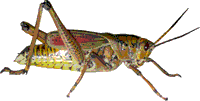Entomology Collections, General

Entomology Papers from Other Sources
Document Type
Article
Date of this Version
1998
Abstract
Field studies were conducted from 1992 to 1996 to select the most effective sex pheromone blend for mating disruption of the obliquebanded leafroller, Choristoneura rosaceana (Harris), in tree fruit orchards in Washington. Dispensers loaded with a 2-component pheromone blend, (Z)-1l-tetradecen-1-yl (Zll-14:0Ac) and (E)-1l-tetradecen-1-yl (Ell-14:0Ac), a 3-component blend that included the addition of (Z)-ll-tetradecenal (Zll-14:Ald), and a 4-component blend also including (Z)-1l-tetradecen-1-o1 (Zll-14:0H) were compared within O.l-ha orchard plots and 100-m2 field cages. The addition ofZll-14:Ald to the 2 acetate components with or without Zll-14:0H did not improve mating or disruption of communication. No disruption occurred in field cages treated with Ell-14:0Ac alone or an 88:12 (%) E:Z 11-14:0Ac blend. Management of C. rosaceana with mating disruption was evaluated for 2 yr in three 16-ha apple orchards by using a 94:6% Z:Ell-14:0Ac blend. Orchards were treated with 1,000 polyethylene tube dispensers per hectare emitting =0.9 mg of pheromone per day. Populations were also monitored in 3 similar 8-ha orchards treated only with insecticides. Catches of male moths in traps baited with synthetic lures and virgin females were significantly lower (92-99%) in pheromone-treated than in untreated orchards. Larval population densities and fruit injury did not differ between treatments. No significant differences were found in larval population densities, trap catch, or fruit injury between the 2-ha center and the outer 14-ha areas of the pheromone-treated orchards. Significant increases in catch by lure-baited traps and fruit injury occurred in the pheromone-treated orchards from the 1st to 2nd yr of the study. The pheromone treatment saved =$250/ha in insecticide costs over 2 yr.


Comments
Published in Environ. Entomol. 27(5): 1080-1088 (1998).